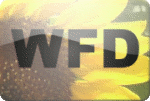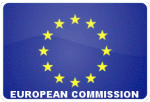WFD Related Links
This page provides links to key websites and associated research projects related to WFD.
Europa and CIRCA
The EUROPA website
acts as a gateway to the European Union and provides information
related to European affairs.
For further details of WFD related activities and other
WFD related information the EUROPA website
has related pages.
CIRCA
is an electronic forum that enables the exchange of information and
acts as a communication platform, supporting the implementation of the
WFD CIS. Following the agreement on the CIS, the Commission set up the
website using the CIRCA tool – Communication Information Resource
Centre Administrator, it allows a given community, such as working
groups, project groups etc, geographically spread across Europe, to
share information, documents, participate in a discussion forum and
various other functionalities.
Other Supporting Information
Eur-Lex
provides free and direct access to all European Union Law; the system
makes consultation of the Official Journal possible, including
legislation, case-law and legislative proposals. A comprehensive search
facility is also available.
The European Environment Agency (EEA) aims to
support sustainable development and achieve significant and measurable
improvements in Europe’s environment through the provision of timely,
targeted, relevant and reliable information to policy making agents and
the public. The link provided accesses the ‘Water’ section of the
website.
LIFE,
introduced in 1992, is the Financial Instrument for the Environment,
and is one of the European Union’s spearheads environmental policy. It
co-finances projects in three areas: LIFE Nature- conserving natural
habitats and wild fauna and flora according to the Birds and Habitats
directives; LIFE-Environment aims to implement Community policy and
legislation in the EU and candidate countries and; LIFE-Third
Countries, is concerned with technical assistance activities for
promoting sustainable development in third countries. LIFE is open to
all EU countries, some candidate countries and some third countries
bordering the Mediterranean and the Baltic Sea
The Joint Research Centre
(JRC) aims to provide customer-driven scientific and technical
support for the conception, development, implementation and monitoring
of EU policies. It is a service of the European Commission and
functions as a reference centre of science and technology for the Union
JRC
is made up of seven institutes, based in 5 separate sites around
Europe.
In collaboration with the DG ENV, JRC have also
undertaken the initiative to launch the European Centre for Ecological
Water Quality and Intercalibration (EEWAI) to assist with the
task of harmonising and intercalibrating surface water ecological
assessment systems of the Member States.
The new
JRC-EEWAI
CIRCA repository is now available and provides details on
Intercalibration related information and activities.
Pilot River Basins
The PRB network was established to test and cross
validate the Guidance Documents developed by the CIS. The pilot river
testing began in 2003 and was completed in 2004. The results of this
testing exercise are shown in the two JRC reports available on the
Other CIS Documents Page on this CD ROM. The following links provide
more detailed information on the work carried out during the PRB
testing phase and current work being undertaken in the 15 PRBs.
More specific details on the PRB sites are available on
the Information Sheets complied by JRC and available on the Platform of
Information Exchange (PIE).
International River Conventions
International Commission for the Protection of the Odra River
against Pollution
International Commission
for the protection of the Elbe River (IKSE)
International Commission for the Protection of the Danube River
(ICPDR)
International Commission
for the Escaut-Schelde River
International Commission for the Protection of the
Rhine River
International
Commission for the Meuse River
Research Framework Programme
Fifth Framework Programme
The FP5 sets out priorities for the priorities for the
European Union’s research, technological development and demonstration
activities for the period 1998-2002. The Key Actions of this programme
are regarded as a cluster of small and large, applied, generic and, as
appropriate, basic research projects directed towards a common European
challenge or problem.
Sustainable
management and quality of water is a key action under
the thematic programme of Energy Environment and Sustainable Development
The website
sets out related EU-policies
and Projects,
as well as other related information. Listed below is a brief summary
of WFD related projects being undertaken as part of FP5. Click on
the titles for links to the related websites.
-
AQEM
The European Union funded AQEM project, supported by
the 5th Framework Programme was carried out between March
2000 and February 2002. It has produced the AQEM assessment system.
This system serves to implement the the WFD by providing an ecological
quality assessment for streams across Europe using benthic
macroinvertebrates.
-
STAR
STAR-Standardisation of River Classifications,
supported by the 5th Framework Programme. The STAR project
provides a framework method for calibrating different biological survey
results against ecological quality classifications to be developed for
the WFD and commenced in January 2002. The 15 work packages were
carried out over a three year duration. The project addresses the
strategic problem of the diversity of river and stream assessment
throughout Europe. Due to the number of methods and the number of
organism groups involved in these methods, a level of intercalibration
and method standardisation is required
- HarmoniCA
HarmoniCA - Harmonised Modelling Tools for
Integrated Basin Management. The HarmoniCA project is supported by the
European Commission under the fifth framework programme and aims to
assist with the development of river basin management plans, supported
by high quality Information and Communication Tools (ICT). The project
will produce guidance methodologies, which are based on support and
consensus that have been realised through incorporating science, policy
and stakeholders
- DANUBS
daNUbs - Nutrient management in the Danube basin and
its impact on the Black Sea. The project is part of the 5th
EU research framework and has been a multi-national and
multi-disciplinary research exercise, which looked at nutrients in the
Danube system. The project was carried out from 2001 through to 2005
and the final report is available on the website.
Sixth Framework Programme (FP6)
FP6 is the financial instrument that has been put in
place to assist with the functioning of the European Research Area
(ERA) - an internal market for science and technology, aiming to better
utilise European research efforts. The website provides
details on activity
areas, projects
as well as other relevant information. Listed below is a summary of
WFD related FP6 projects. Click on the titles for links to the
related websites.
-
REBECCA
REBECCA is supported under the 6th
Framework Programme under the European Commission. The objective of
REBECCA is to derive further information on the relationships between
the chemical and ecological status of surface waters. This will provide
the foundation for one of the key scientific principals on which the
WFD is based and will provide support for the implementation of the
WFD. Understanding the relationship between the biological state and
physical and chemical properties of surface waters to a sufficient
level will enable the management of catchments and rivers in order to
achieve ecological objectives.
-
SWIFT
Supported by the European Commission under the sixth
framework programme SWIFT is an EU-R&D project The seven work
packages will be carried over a three-year period between 2004 and 2006
and aim to produce quality control tools for validation purposes of
screening methods, an inventory of existing and developing screening
methods for water monitoring.
-
EURO-LIMPACS
Euro-Limpacs aims to assess the effects of future
global climate change on Europe’s freshwater ecosystem and is supported
under the 6th Framework Programme. It is a €20 million
integrated project, consisting of 37 partners and coordinated by the
Environmental Change Research Centre. The project will run from
February 2004 through to January 2009.
- BRIDGE
BRIDGE - Background cRiteria for the IDentification
of Groundwater thrEsholds. The BRIDGE project comes under the
policy-orientated research Scientific Support to Policies (SSP) of the
Sixth framework Programme Priority. Representatives from the CIS
Groundwater Working Group 2C are on the Advisory Committee, ensuring
subsequent good links. The project sets out to develop a generic
methodology for use by MSs in order to define environmental thresholds.
The project will run for 2 years with 6 work packages and commenced at
the start of 2005.
Seventh Framework Programme (FP7)
In April 2005 the Commission announced its proposals
for
the Seventh Framework Programme. FP7 will run from
2007-2011, it aims to build on the achievements of FP6
towards the creation of the ERA. Support will be given to a whole range
of research activities where the action is industry driven and
organised into four sub programmes: collaborative research; Joint
Technology Initiatives (see pdf-JTI in share); coordination of
non-community research programmes and; international cooperation.
|


